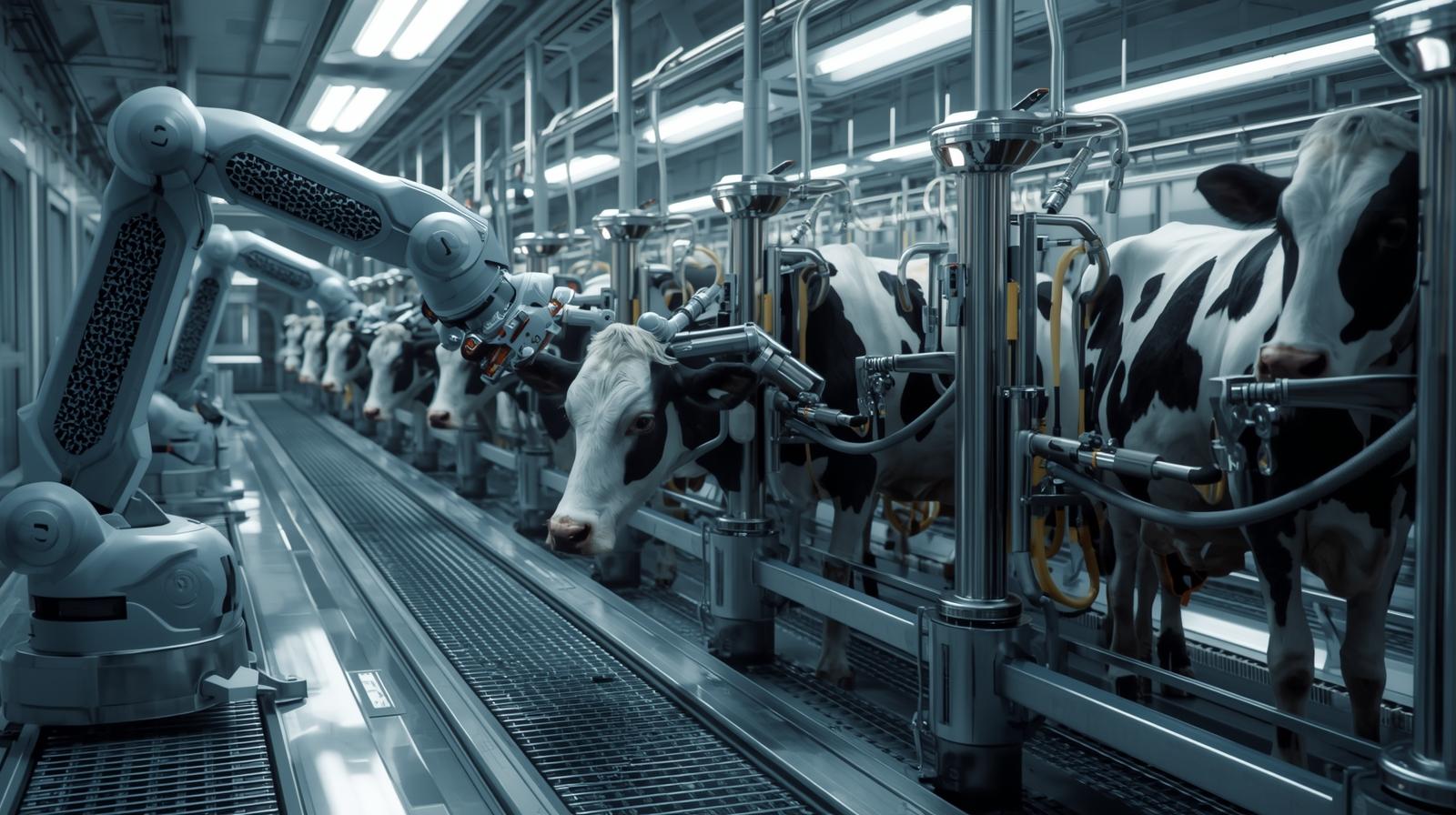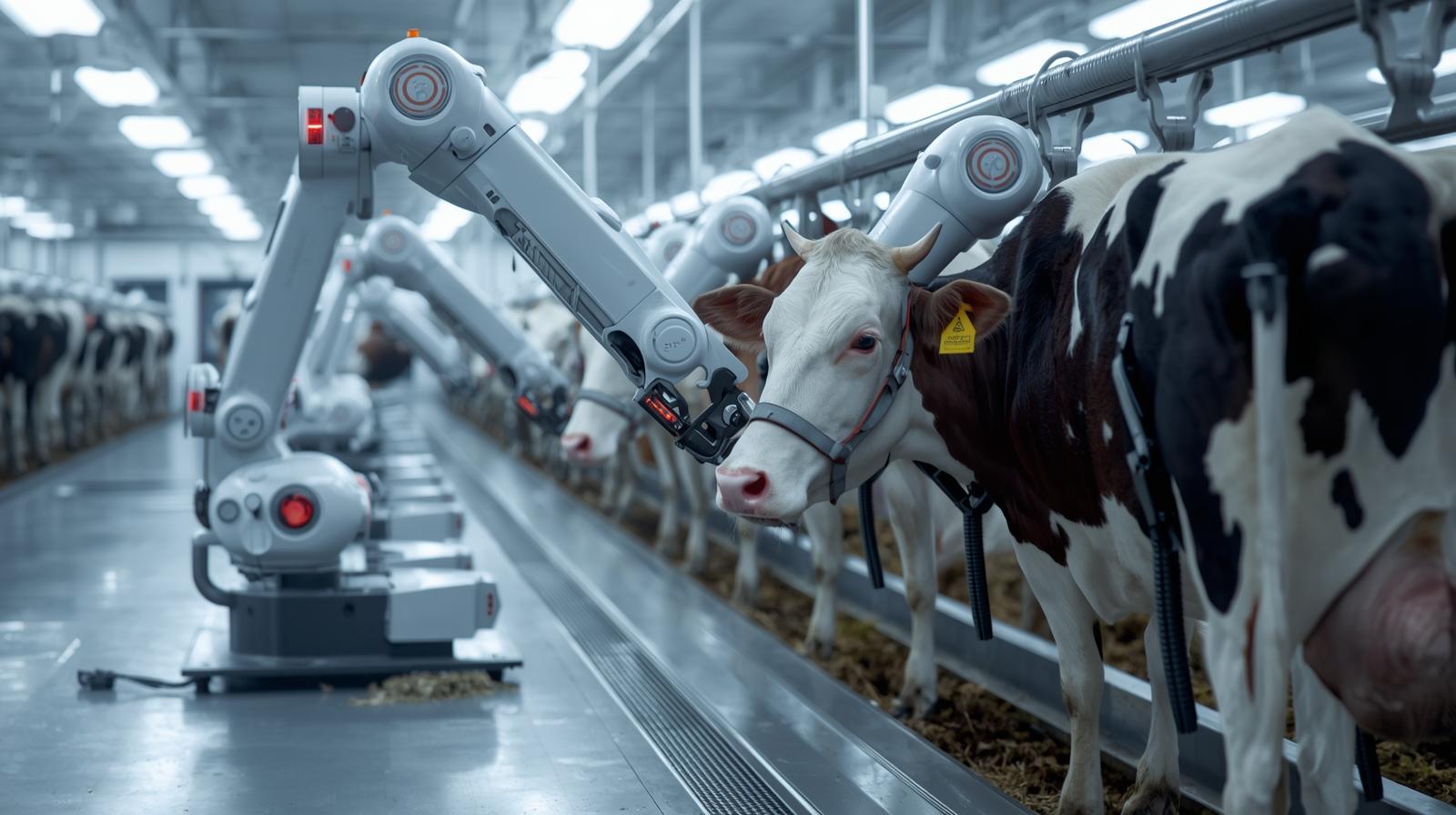The agricultural sector is undergoing a profound technological revolution. Dairy farming stands at the forefront of this transformation. The future of the milking automation industry promises unprecedented efficiency and animal welfare. This shift is driven by the adoption of sophisticated robotic systems. These systems are fundamentally changing how farmers manage their herds. The traditional image of dairy farming is rapidly evolving into a tech-centric operation. This article will explore the key trends defining this exciting future.
The milking automation market is projected to reach USD 3.68 billion by 2030 from USD 2.61 billion in 2025, at a CAGR of 7.1% from 2025 to 2030.

The Current State of Milking Robotics
Today’s automated milking systems are marvels of engineering. They combine advanced sensors, data analytics, and robotic mechanics. A cow voluntarily enters the milking stall at her own convenience. The system then identifies the animal through a unique transponder. A laser guided arm cleans the teats and attaches the milking cups. The entire process is monitored by multiple sensors to ensure milk quality and animal health. This technology has already provided significant labor savings for early adopters. It allows for a more flexible and data informed management style.
The Role of Artificial Intelligence
Artificial intelligence is the true game changer for this industry. AI algorithms analyze vast amounts of data collected during each milking session. They can detect subtle changes in milk composition, such as fat content or somatic cell counts. This data provides early warnings for health issues like mastitis. The system can then automatically separate abnormal milk. AI also optimizes the milking process for each individual cow. It learns the optimal teat placement and milking duration for every animal. This personalized approach maximizes yield and ensures cow comfort.
Advanced Sensor Technology and IoT
The Internet of Things creates a connected ecosystem within the modern dairy. Sensors are embedded in every component of the automation system. They monitor everything from milk conductivity to cow activity levels. This real time data is transmitted to a central farm management platform. Farmers can receive alerts directly on their mobile devices. This allows for immediate intervention when necessary. The integration of IoT enables proactive herd management. It transforms raw data into actionable intelligence for the farmer.
Data Analytics for Proactive Herd Management
The wealth of data generated goes beyond immediate health alerts. Sophisticated analytics platforms identify long term trends and patterns. Farmers can track milk production curves for individual cows and the entire herd. This helps in making informed decisions about nutrition and breeding. Predictive models can forecast potential calving dates or health events. This data driven approach minimizes guesswork in farm management. It empowers farmers to optimize their operations for maximum productivity and profitability.
Enhanced Animal Welfare and Comfort
A core benefit of automation is the significant improvement in animal welfare. Cows are no longer tied to a rigid milking schedule. They can choose to be milked whenever they feel the need. This voluntary milking reduces stress and improves overall herd health. The gentle and consistent robotic process is often more comfortable for the animal. Automated systems also monitor indicators of well being like rumination and resting time. A content cow is not only ethically better but also a more productive one. The future of the milking automation industry is inextricably linked to superior animal care.
Key Drivers of Market Growth
Several powerful factors are fueling the expansion of this industry. The global labor shortage in agriculture makes automation a necessity. Consumers are increasingly demanding transparency and ethical farming practices. Technological advancements are making systems more affordable and reliable. Government subsidies in some regions encourage the adoption of smart farming technologies. The relentless pursuit of operational efficiency also pushes farmers toward automation. These drivers create a fertile ground for continuous innovation and market growth.
Economic Implications for Dairy Farmers
The initial investment in milking robotics is substantial. However the long term economic benefits are compelling. Farmers experience significant reductions in labor costs. They also benefit from increased milk yield and improved milk quality premiums. Herd health improvements lead to lower veterinary costs and reduced cow replacement rates. The farmer’s quality of life is enhanced through reduced physical labor and flexible time management. This allows for a more strategic focus on farm expansion and business development. The return on investment becomes clear over time.
Sustainability and Environmental Impact
The future of the milking automation industry is deeply green. These systems contribute significantly to sustainable farming practices. Precise feeding based on individual cow data reduces feed waste. Optimized herd health management lowers the use of antibiotics. Automated systems also manage manure efficiently, reducing environmental runoff. Energy efficient designs and better resource management minimize the carbon footprint of dairy operations. This alignment with environmental stewardship is crucial for the industry’s social license to operate.
Integration with Farm Management Software
Milking robots do not operate in isolation. They are a key component of an integrated farm management system. Data from the milking robots flows seamlessly into central software platforms. This software often manages other aspects like feed rations and fertility cycles. It provides a holistic view of the entire farm operation on a single dashboard. This integration allows for comprehensive reporting and analysis. It turns the dairy farm into a finely tuned, data driven enterprise. The synergy between hardware and software is essential for future success.

The Challenge of High Initial Investment
Despite the benefits, the high capital cost remains a significant barrier. A single robotic milking unit represents a major financial commitment. This is particularly challenging for small and medium sized dairy operations. Access to financing and favorable loans is critical for wider adoption. The industry is responding by developing more modular and scalable solutions. Some companies are exploring robotics as a service model to lower the entry point. Overcoming this financial hurdle is key to democratizing the technology.
The Need for Technical Expertise
Operating a highly automated dairy requires a new skill set. Farmers must transition from hands on laborers to data managers and technicians. They need to understand software interfaces and interpret complex data reports. Basic troubleshooting of robotic components is also a necessary skill. This shift necessitates continuous training and support from technology providers. Educational institutions are updating their curricula to include precision dairy farming. Building this technical expertise is fundamental for the future workforce.
Emerging Trends in Robotic Milking
The innovation in this field continues at a rapid pace. We are seeing the development of advanced features and new capabilities. Some key trends shaping the future include:
-
Integration of computer vision for better teat detection and hygiene.
-
Development of fully autonomous mobile milking robots.
-
Advanced predictive health analytics for even earlier disease detection.
-
Increased use of collaborative robots for other barn tasks like feeding.
The Global Market Landscape
The adoption of milking automation is growing worldwide. Europe and North America are currently the dominant markets. However regions like Asia Pacific are showing rapid growth potential. Different regions have varying farm structures, influencing the type of systems adopted. International technology companies are competing with specialized regional players. This global competition drives innovation and can lead to more cost effective solutions. Understanding regional dynamics is crucial for market players.
Download PDF Brochure @ https://www.marketsandmarkets.com/pdfdownloadNew.asp?id=265039621
The Human Element in Automated Dairies
Automation does not eliminate the need for human farmers. It redefines their role. Farmers are freed from the monotony of manual milking. They can focus on strategic decision making and animal observation. The farmer’s intuition and experience combined with data insights create a powerful combination. The relationship between the farmer and the cow evolves rather than disappears. The future farm will require skilled professionals who are both tech savvy and deeply connected to their animals.
Preparing for the Automated Future
Dairy farmers must begin preparing for this inevitable future. They should start by familiarizing themselves with the available technologies. Attending agricultural shows and industry workshops is highly recommended. Conducting a financial analysis to understand the return on investment is a crucial step. Networking with other farmers who have already adopted robotics can provide valuable insights. A proactive and open mindset towards technological change is the greatest asset.
An Udderly Transformative Future
The future of the milking automation industry is bright and transformative. It represents a convergence of robotics, artificial intelligence, and data science. This synergy is creating a new paradigm for dairy farming that is more efficient, sustainable, and animal centric. While challenges related to cost and skills remain, the long term benefits are undeniable. The industry is moving towards a model of precision dairy farming. This model promises to ensure the economic viability and environmental sustainability of dairy production for generations to come.
Explore In-Depth Semiconductor & Electronics Market Research:
https://www.marketsandmarkets.com/semiconductorand-electonics-market-research-87.html
Frequently Asked Questions
What is the main benefit of automated milking systems?
The primary benefit is a significant reduction in labor requirements. Additionally, these systems provide valuable data on individual cow health and milk production, leading to improved herd management and increased productivity.
How does artificial intelligence improve the milking process?
AI analyzes data from sensors to detect health issues early, optimizes milking routines for each cow, and improves the accuracy of teat placement. This leads to better milk quality, enhanced animal welfare, and higher efficiency.
Are robotic milking systems suitable for small farms?
While the initial cost is a barrier, manufacturers are developing smaller, more affordable models. The economic viability depends on the farm’s specific financial situation and long term business plan, with financing options making it more accessible.
What happens if the robotic system breaks down?
Reputable manufacturers offer 24/7 technical support and remote diagnostics. Most systems also have manual override options to ensure the cows can still be milked during any necessary repairs or maintenance periods.
How does automation affect the quality of the milk produced?
Automation generally improves milk quality. The closed system reduces the risk of contamination. Consistent and gentle milking routines, coupled with automatic milk monitoring, ensure only high quality milk enters the bulk tank.
See The Latest Semiconductor Reports:
Proximity Sensor Market Size, Share & Trends : https://www.marketsandmarkets.com/Market-Reports/proximity-sensor-market-36281914.html
Terahertz Technology Market Size, Share & Trends : https://www.marketsandmarkets.com/Market-Reports/terahertz-technology-market-71182197.html
Actuators Market Size, Share & Trends : https://www.marketsandmarkets.com/Market-Reports/global-actuators-market-59465451.html
Time-Sensitive Networking Market Size, Share & Trends : https://www.marketsandmarkets.com/Market-Reports/time-sensitive-networking-market-215000493.html
Battery Technology Market Size, Share & Trends : https://www.marketsandmarkets.com/Market-Reports/battery-technology-market-253343109.html
Smart Appliances Market : https://www.marketsandmarkets.com/Market-Reports/smart-appliances-market-8228252.html
